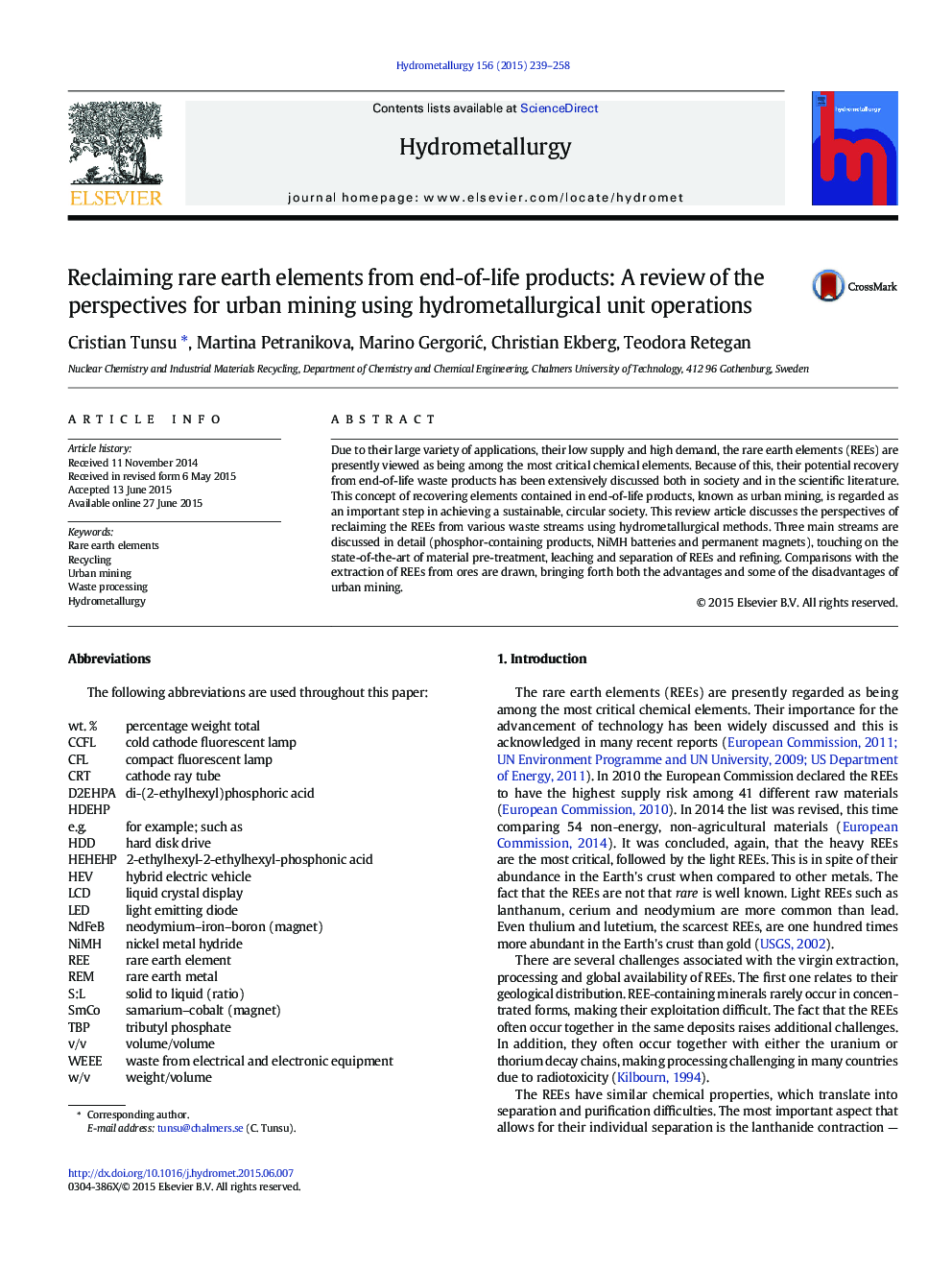| Article ID | Journal | Published Year | Pages | File Type |
|---|---|---|---|---|
| 212018 | Hydrometallurgy | 2015 | 20 Pages |
•The potential recovery of REEs from end-of-life products is discussed.•State-of-the-art information about hydrometallurgical processing is reviewed.•Focus is placed on fluorescent lamps, permanent magnets and NiMH batteries.•Advantages and disadvantages of hydrometallurgical methods are presented.•The challenges in urban mining of REEs are discussed.
Due to their large variety of applications, their low supply and high demand, the rare earth elements (REEs) are presently viewed as being among the most critical chemical elements. Because of this, their potential recovery from end-of-life waste products has been extensively discussed both in society and in the scientific literature. This concept of recovering elements contained in end-of-life products, known as urban mining, is regarded as an important step in achieving a sustainable, circular society. This review article discusses the perspectives of reclaiming the REEs from various waste streams using hydrometallurgical methods. Three main streams are discussed in detail (phosphor-containing products, NiMH batteries and permanent magnets), touching on the state-of-the-art of material pre-treatment, leaching and separation of REEs and refining. Comparisons with the extraction of REEs from ores are drawn, bringing forth both the advantages and some of the disadvantages of urban mining.
Graphical abstractFigure optionsDownload full-size imageDownload as PowerPoint slide
